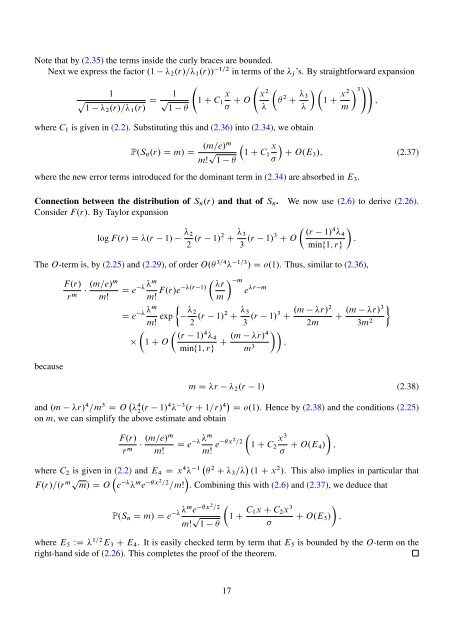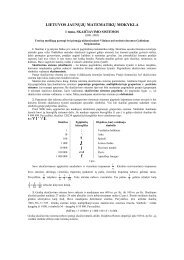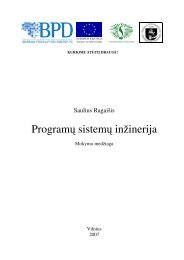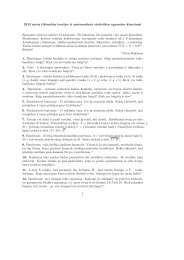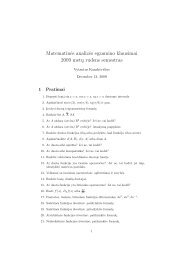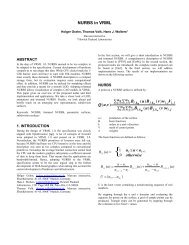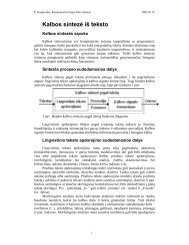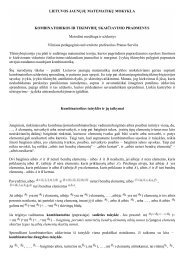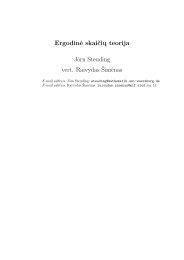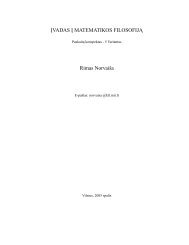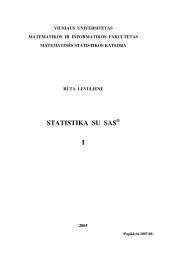Preprint
Preprint
Preprint
You also want an ePaper? Increase the reach of your titles
YUMPU automatically turns print PDFs into web optimized ePapers that Google loves.
Note that by (2.35) the terms inside the curly braces are bounded.Next we express the factor .1 2 .r/= 1 .r// 1=2 in terms of the j ’s. By straightforward expansion1p1 2 .r/= 1 .r/ D 1p1 1 C C 1x C Owhere C 1 is given in (2.2). Substituting this and (2.36) into (2.34), we obtainP.S n .r/ D m/ D.m=e/mm! p 1 2 C 3!!31 C x2; mx21 C C 1xC O.E 3 /; (2.37)where the new error terms introduced for the dominant term in (2.34) are absorbed in E 3 .Connection between the distribution of S n .r/ and that of S n . We now use (2.6) to derive (2.26).Consider F.r/. By Taylor expansionlog F.r/ D .r 1/ 22 .r 1/2 C 33 .r 1/3 C O .r 1/ 4 4:minf1; rgThe O-term is, by (2.25) and (2.29), of order O. 3=4 1=3 / D o.1/. Thus, similar to (2.36),becauseF.r/r m .m=e/mm! D e mr mm! F.r/e .r 1/ e rmD e mm! exp 22 .r 1/2 C 33 .r 1/3 C 1 C Or/4 ; .r 1/ 4 4minf1; rg C .mm 3m.m r/22mC .m r/33m 2m D r 2 .r 1/ (2.38)and .m r/ 4 =m 3 D O 4 2 .r 1/4 3 .r C 1=r/ 4 D o.1/. Hence by (2.38) and the conditions (2.25)on m, we can simplify the above estimate and obtainF.r/r m .m=e/mm!D e mm! e x2 =2x1 3C C 2 C O.E 4/ ;where C 2 is given in (2.2) and E 4 D x 4 1 2 C 3 = .1 C x 2 /. This also implies in particular thatF.r/=.r mp m/ D O e m e x2 =2 =m! . Combining this with (2.6) and (2.37), we deduce thatP.S n D m/ D e m e x2 =21m! p C C 1x C C 2 x 31 C O.E 5 / ;where E 5 WD 1=2 E 3 C E 4 . It is easily checked term by term that E 5 is bounded by the O-term on theright-hand side of (2.26). This completes the proof of the theorem.17


